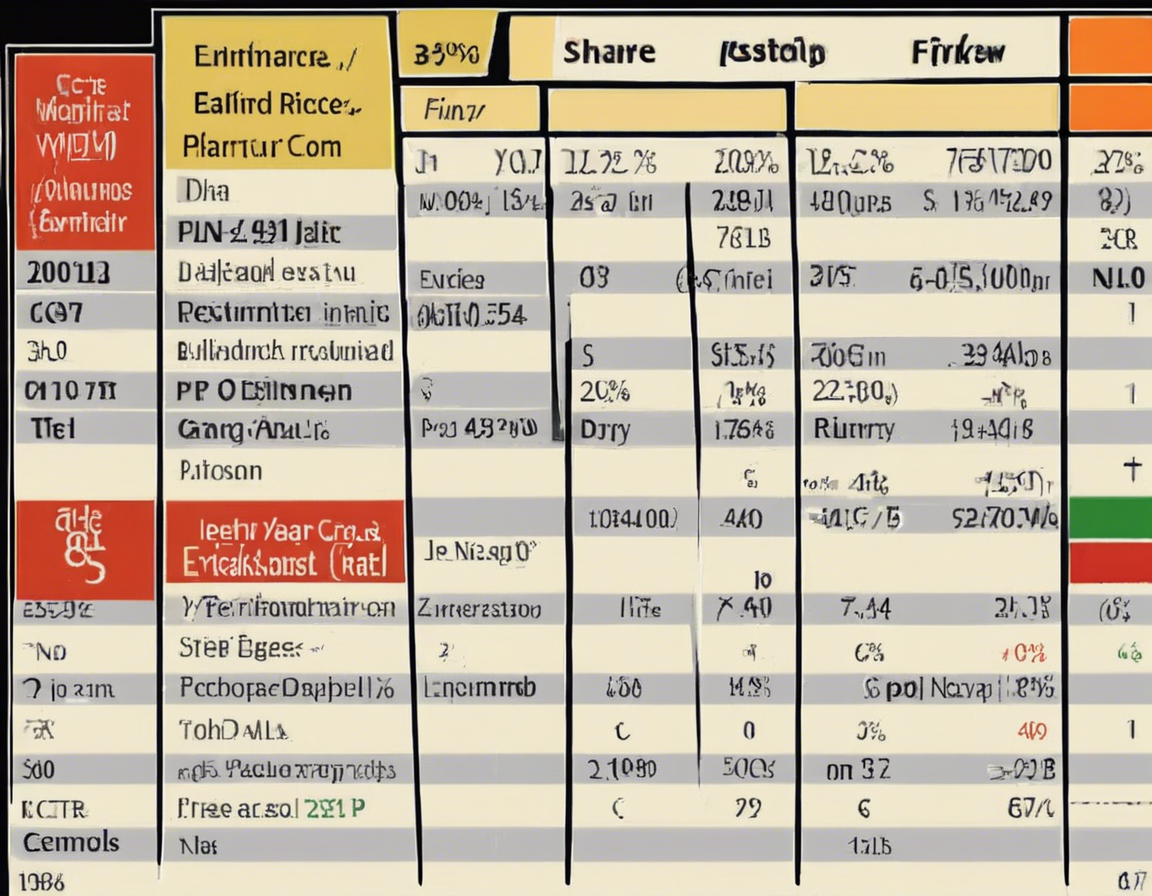Have you ever wondered why share prices fluctuate so frequently in the stock market? For novice investors, these fluctuations can be quite perplexing and may cause anxiety. However, understanding the underlying reasons for these price movements can help you make more informed investment decisions. In this blog post, we will delve into the intricacies of share price fluctuations, exploring the various factors that influence them and providing insights on how you can navigate this volatile landscape.
Understanding Share Price Fluctuations
What Causes Share Prices to Fluctuate?
Share prices are subject to a myriad of factors that can cause them to fluctuate. Some of the key drivers include:
-
Market Sentiment: Investor perceptions and emotions play a significant role in shaping share prices. Positive news or developments can drive prices up, while negative events can lead to a decline.
-
Economic Indicators: Macroeconomic factors such as GDP growth, inflation rates, and employment data can impact share prices. Strong economic performance typically boosts investor confidence and drives prices higher.
-
Company Performance: The financial health and performance of a company have a direct impact on its share price. Factors such as revenue growth, profitability, and future prospects can influence investor perceptions.
-
Industry Trends: Share prices of companies operating in the same industry tend to move in tandem. Industry-specific factors such as regulatory changes, technological advancements, and market dynamics can affect prices.
-
Market Trends: Overall market trends, including bull and bear markets, can influence the direction of share prices. During bull markets, prices tend to rise across the board, while bear markets see widespread declines.
The Role of Supply and Demand
At its core, share price fluctuations are driven by the fundamental economic forces of supply and demand. When demand for a stock exceeds supply, prices tend to rise as buyers compete for limited shares. Conversely, an oversupply of shares can lead to price declines as sellers look to offload their holdings.
Strategies for Navigating Share Price Fluctuations
Long-Term Investing vs. Short-Term Trading
Investors can adopt different strategies to navigate share price fluctuations. Long-term investors focus on the underlying fundamentals of a company and are less concerned with short-term price movements. In contrast, short-term traders seek to profit from volatile price swings by actively buying and selling shares.
Diversification and Risk Management
Diversification is a key strategy for managing risk in a volatile market. By spreading your investments across different asset classes and industries, you can mitigate the impact of share price fluctuations on your overall portfolio. Additionally, setting stop-loss orders and employing risk management techniques can help protect your investments from steep declines.
Technical Analysis and Market Trends
Technical analysis involves studying historical price movements and volume patterns to predict future share price fluctuations. By identifying key support and resistance levels, trendlines, and chart patterns, investors can make more informed decisions about when to buy or sell shares.
Stay Informed and Seek Professional Advice
Staying informed about market developments, company news, and economic indicators is essential for navigating share price fluctuations. Additionally, seeking advice from financial professionals or investment advisors can provide valuable insights and guidance on how to navigate volatile market conditions.
Frequently Asked Questions (FAQs)
1. What are some common catalysts for sudden share price fluctuations?
Sudden share price fluctuations can be triggered by events such as earnings reports, mergers and acquisitions, regulatory announcements, or geopolitical developments.
2. How do interest rates impact share price fluctuations?
Changes in interest rates can have a significant impact on share prices, particularly in interest rate-sensitive sectors such as banking and real estate.
3. Is it possible to predict share price fluctuations accurately?
While it is challenging to predict share price fluctuations with pinpoint accuracy, investors can use various tools and analysis techniques to make informed predictions.
4. How can geopolitical events influence share price fluctuations?
Geopolitical events such as trade wars, political instability, or natural disasters can create uncertainty in the markets, leading to share price fluctuations.
5. What role do emotions play in driving share price fluctuations?
Emotions such as fear and greed can drive share price fluctuations as investors react to market news and sentiments, often leading to irrational price movements.
In conclusion, share price fluctuations are a natural part of the stock market ecosystem, driven by a complex interplay of factors. By understanding the underlying drivers of these price movements and adopting sound investment strategies, you can navigate market volatility with confidence and make more informed investment decisions.

